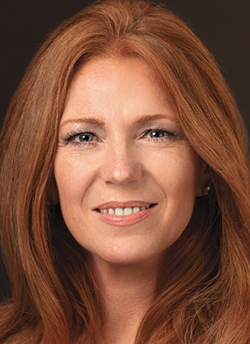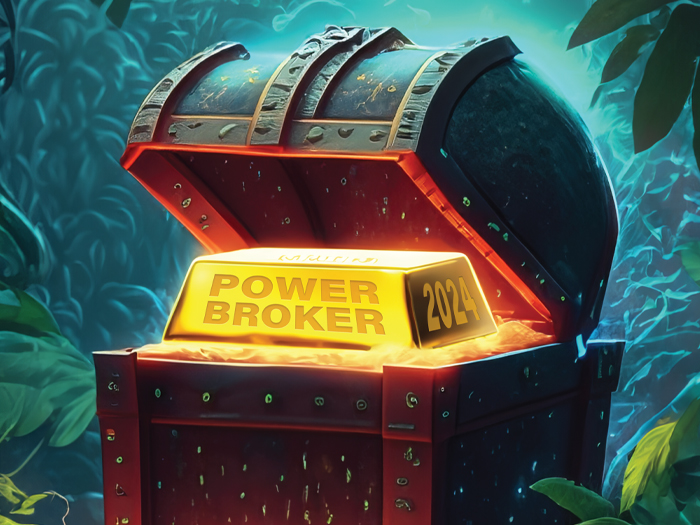Marsh’s Captive Premium Volume Up 40% Since 2019. How COVID and a Hard Market Boosted Business

The growth of captive adoption has increased at an unprecedented rate over the last two years.
That was one of the key findings from Marsh Captive Solutions’ 2022 Captive Landscape Webinar, which revealed that 200 new captives were added to the broker’s portfolio in 2020-21, with premiums for the new formations up $3.4 billion over the same period.
To date, Marsh has 1,500 captives under management worth $68 billion in premiums on its book of business, up almost 40% since 2019.
“To put that in context, the total premiums we manage are bigger than the world’s largest property and casualty carrier by about $6 billion,” said Michael Serricchio, America sales and advisory leader at Marsh Captive Solutions. “The surplus running through our captives is also almost double that of the largest carrier at $119 billion.”
This accelerated growth has been driven by a combination of the COVID-19 pandemic and a tough traditional insurance market, which have presented a host of new and complex challenges for risk managers to tackle. Mirroring the hard market of the 1980s when new insurers were formed to provide much-needed liability coverage, as rates have started to increase over the last two years, so more businesses are turning to captives to self-insure themselves.
This has been exacerbated by rising inflation, and asset and claims values eroding insurer profitability, resulting in higher premiums and insureds having to take on more risk. That will only be magnified as the war in Ukraine and global supply chain problems persist.
Change in Company Profile
The profile of companies seeking captives is changing too. In the past, captives were the sole domain of large multinationals, but now increasingly more middle-market and smaller firms are looking for innovative solutions that enable them to take on more of the risk themselves.

Lorraine Stack, international sales and advisory leader, Marsh Captive Solutions
Largely, it’s parent companies with revenue of less than $500 million that are behind Marsh’s 200 new captive formations, currently standing at 37%. The majority of these formations are established by private parent companies (58%), while, by captive size, most have under $5m in gross premiums (77%).
“The number of new formations for private companies, in particular, is significantly higher than what we have experienced previously,” said Arthur Koritzinsky, product innovation leader at Marsh Captive Solutions. “Also, they tend to be smaller in terms of premium size because most new captives start small with the expectation that they will grow gradually over time.”
Within those companies, financial institutions represent the largest number of new formations at 29%. Next come health care (10%), automotive (6%) and transportation (6%). What they all have in common, though, is that they face many similar risks, including, but not limited to: employers’ liability, directors and officers (D&O) and cyber.
North American Bias
Most new captives were formed by North American entities (60%), which exactly reflects Marsh’s portfolio of U.S. parent companies. The big growth area, however, is Asia Pacific and Australia, whose companies accounted for 10% and eight percent of formations, respectively.
“Much of this has been driven by the challenging market conditions in Australia, where the hard market started far earlier than for the rest of the world,” said Lorraine Stack, international sales and advisory leader at Marsh Captive Solutions. “Added to that, there has also been an increase in sophistication of risk management in the Asia Pacific region.”
By domicile, 51% of captives were formed in the U.S., jumping from 38% three years ago. Europe has been gaining popularity as a domicile too, with Guernsey and Luxembourg the most in demand, the former because of its fast-track approval process.
Stack said that inquiries for new captive formations broadly fall into two categories: those organizations that want to reduce their insurance costs and pricing volatility over multiple different lines, and those that struggle to find a particular line of coverage.
“Those companies that want to reduce their costs tend to do a feasibility study of their risks,” said Stack. “For those that want a line of coverage that the traditional insurers aren’t providing, it’s a different matter altogether.”
Demand for Non-traditional Coverage
In terms of lines of business, there has been a surge in demand for non-traditional coverage. Of Marsh’s new formations, third-party business accounts for 10%, largely driven by managing general agents and Insurtech startups, closely followed by terrorism (6%) and medical stop loss (6%).
“These companies are writing everything from property to cyber and are using captives to get access to more markets and capacity, and reinsure some of that risk,” said Serricchio. “As terrorism is becoming more prevalent globally and companies are expanding their employee benefits programs, there has been a big uptake in captives there too, especially cell captives.”
Cyber is another area where take-up is on the rise, accounting for 6% of the formations. Business interruption (4%) and D&O (4%) are also gaining traction, precipitated by property damage and contingent business risks that emerged during the pandemic.
In spite this growth in new captives for non-traditional lines, traditional lines have remained strong too. Casualty makes up 44% of traditional coverages, while property accounts for 36%. Medical malpractice (8%) and professional liability (7%) take-up has also been driven by rising social inflation.
“It’s the perfect storm of a challenged market, social inflation and new captives being used to plug the holes in core coverages,” said Serricchio. “Added to that is demand for innovative, outside-the-box coverage from captives, which is only going to continue in the future.”
As far as structures go, single parent captives were the overwhelming favorite at 60%, versus 18% for cells. Within cells, property, and professional and general liability were the top three coverages written in the last two years.
“The appeal of cell captives is clear,” said Koritzinsky. “They are quick and easy to form and there isn’t a huge amount of compliance required or hoops to be jumped through — they don’t have be audited separately and there are no board meetings that have to be attended.”
Moving forward, Koritzinsky believes that there will also be greater opportunities with captives for risk pooling and aggregation. This will be driven by an abundance of capacity, he said.
“Risk pooling provides for a greater risk diversification,” said Koritzinsky. “It also helps to reduce variability, which makes everyone involved more comfortable with the captive.” &










